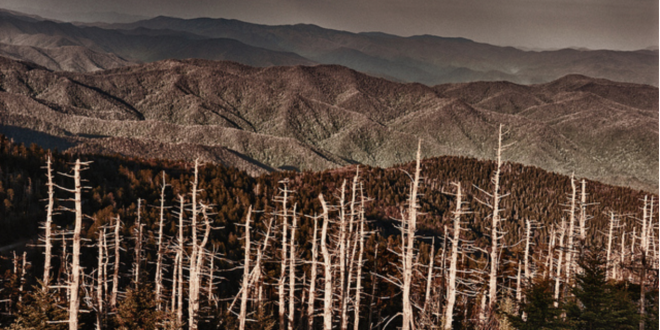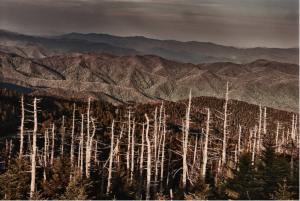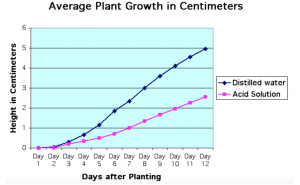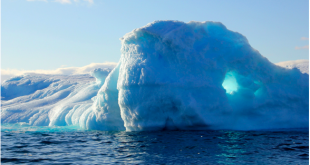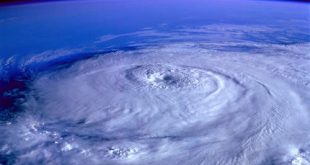Submitted by: Iris Yuan
There are many large environmental problems plaguing our planet today; from El Nino to over-pollution in Beijing and more, there is a plethora of problems that our environment is grappling with. However, that means that we tend to overlook the smaller, more insignificant issues. What we don’t realize, however, is that these problems, if left alone and untreated, will continue to grow and eventually become one of our larger issues. For example, acid rain is considered a “minor” issue today, but its consequences are more far-reaching than you would think.
To put the issue in perspective, the following graph from The Science Project shows the relationship between the height of plants watered with both distilled water and acid water.
As can be seen, the plants that received distilled water grew much faster than the ones with acid. This is part of a much bigger picture. Acidic water can release bits of aluminum foil from the soil and carry it through the water. Acid rain which flows through water can also remove minerals from the soil, leaving much bigger and much more important plants such as trees with no nutrients. Acidic fog or clouds can strip nutrients from the leaves of flora as well. The end result is forests that are vulnerable and unable to withstand more and more difficulties.
Acid rain has all kinds of other effects on our ecosystem; it affects mostly the aquatic environments. Like all other environments, all life is connected to each other in some shape or form. If one species is killed, the entire system needs to shift to help maintain balance, otherwise we witness collapse. So if acid rain continues to enter our water, important organisms such as mayflies, which can withstand a pH level of 5.5, may begin to be killed off. The frog, on the other hand, has a critical pH level of 4, so it can take slightly more acidic water. However, it’s main food is the mayfly, and if those numbers begin to decrease, so will the frog population.
Acid rain doesn’t only affect nature and wildlife, it’s also working its way into our lives. It can land on buildings, statues, and other structures, which damages the surfaces over time. Through acid rain, dust particles can also become acidic (this is known as dry deposition), and this also contributes to the corrosion of structures. What we are left with is weak links in our buildings and faceless statues.
We can fight acid rain by diminishing the amount of pollutants we release into the air. We can stop burning fossil fuels and turn to electric cars rather than those powered by gas. Individuals can also conserve energy by using less electricity in their homes. Of course, even if we did all we could to help stop acid rain, it would still take many years for all of the harmful effects to slowly go away, but by carpooling when we can or turning off unnecessary lights we can begin to make a difference.
 Tempus Magazine By Students, For Students
Tempus Magazine By Students, For Students 